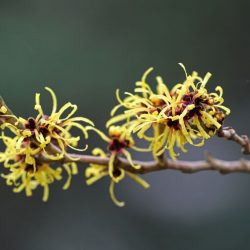Indoor air can be up to five times more polluted than outdoor air. The causes? A variety of factors, including chemicals emitted by furniture, cleaning solvents, personal care products, pet hair and household appliances. However, there are natural solutions to combat indoor pollution. Depolluting plants, essential oils and natural air purifiers can all be effective. What’s more, it’s important to maintain good ventilation in your home by airing regularly and using quality air filters to eliminate atmospheric pollutants. By taking steps to reduce indoor pollution, you can create a safer and healthier environment for your family.
Where does indoor air pollution come from?
Indoor air pollution is caused by a variety of factors, such as gas emissions from furniture and building materials, chemicals in cleaning products, solvents, personal care products and cooking fumes. Other common sources of indoor pollution include moulds and fungi, animal hair and dust particles. The accumulation of these substances can affect indoor air quality and cause health problems such as eye, nose and throat irritations, allergies, headaches and respiratory problems.
Which plants can purify indoor air?
Some plants are more effective than others at purifying indoor air. Aloe vera is known to absorb the chemicals emitted by electronic equipment. Ficus Benjamina helps to eliminate gaseous pollutants such as formaldehyde. Depolluting plants such as Ivy, Pothos and Philodendron are also effective in reducing the amount of pollutants in indoor air.
What natural solutions are there to combat indoor pollution?
There are several natural solutions for combating indoor pollution, including essential oils are one of them. Essential oils are natural aromatic plant extracts with antibacterial, antiviral, antifungal and antiseptic properties. They can help purify the air by reducing bacteria, viruses and mould, while improving air quality.
Some essential oils have specific properties that can help purify indoor air. The essential oil of tea treeis known for its antibacterial and antifungal properties. In fact, it can help eliminate mould and bacteria from the air. Lavender essential oil is also effective for purifying indoor air and can help reduce unpleasant odours.
There are several ways to use essential oils to purify indoor air. You can add a few drops of essential oil to an essential oil diffuser to perfume your home and purify the air. You can also add essential oils to natural cleaning products to increase their effectiveness.
Some essential oils can be toxic to pets and children. It is therefore important to check their safety before using them. It’s also important to use quality essential oils and follow the recommended doses.
Tips for a healthier home
It’s essential to take preventive measures to improve the quality of the air inside your home. By using natural cleaning products, you can reduce the amount of chemicals in your indoor air. Conventional cleaning products often contain harmful chemicals. Glycol ethers, ammonia and synthetic fragrances can cause skin irritations, headaches and respiratory problems. Natural cleaning products, such as white vinegar, baking soda and lemonare safer and more effective alternatives.
It is also important to maintain a relative humidity of between 30% and 50% in your home to prevent the growth of mould and fungi. Mould can cause allergies, skin irritations, headaches and respiratory problems. To maintain the right level of humidity, you can use a dehumidifier in summer and a humidifier in winter.
It’s also important not to smoke inside your home. This is because cigarette smoke contains thousands of harmful chemicals that can affect indoor air quality. Banning smoking indoors can help reduce the amount of pollutants in the air.
Finally, it’s important to regularly check the combustion appliances in your home, such as wood-burning stoves, fireplaces and water heaters, to prevent carbon monoxide leaks. Carbon monoxide is an odourless, colourless gas. It can cause nausea, headaches and respiratory problems, and can be fatal if inhaled for long periods.
@soin.et.nature 🌿💧 Transformez l’eau de votre robinet en eau purifiée grâce aux filtres à charbon actif Les Artistes disponibles sur notre pharmacie en ligne www.soin-et-nature.com ! Découvrez les deux options pour une eau saine et détoxifiée 🌱 1️⃣ Charbon végétal 100% Made in France 🇫🇷 : issu de bambous garantis sans pesticides et produits chimiques 2️⃣ Charbon végétal Binchotan : composé de bois d’eucalyptus du Vietnam, 100% recyclable et bio 🌏 ✨️C’est simple et rapide ! Faites bouillir le charbon 5-10 min, puis placez-le dans votre contenant avec de l’eau du robinet. Laissez filtrer 1h à 8h et savourez une eau libérée de ses polluants et enrichie en minéraux essentiels 🥤 ✨️Compatible avec bouteilles isothermes, canettes isothermes et carafes. Faites le choix de la santé et de l’écologie ! 🍃🌍 #soinetnature #charbonactif #eau #santénaturelle #filtration #ecologie #madeinfrance #binchotan #hydratation #detoxyourwater #conseil #santénaturelle #economique #pascher #astuce #fyp #pourtoi #pollution #planète #bio #recyclage #lesartistes #charbon #charbon actif
♬ Sound of flowing water (ASMR) 3D sound(938614) – MN Field Record
Indoor pollution and tap water purification: a challenge for health and the environment
Although less visible than outdoor pollution, indoor pollution can have harmful effects on our health and well-being. It comes from a variety of sources, including building materials, household products, furniture, electronic appliances and even the water we drink. Tap water purification therefore plays an essential role in reducing our exposure to these pollutants and preserving our indoor environment.
By purifying tap wateryou eliminate impurities, heavy metals, drug residues and chemicals from the water. In this way, you help to reduce indoor pollution by limiting the diffusion of these harmful substances into the air in your home, particularly when you use water for cooking, cleaning or showering. This improves the quality of the air you breathe, and reduces the risk of allergies, irritations and other health problems linked to indoor pollution.
Do we need to ventilate regularly to improve indoor air quality?
Yes, it’s important to air your home regularly to help reduce indoor pollution. Ventilation renews indoor air and removes air pollutants such as gas emissions from furniture and household appliances, chemicals from cleaning products, solvents, personal care products, cooking fumes and dust particles.
In fact, it’s a good idea to air your home every day. Open the windows for around 15 to 30 minutes, even in winter. You can also use a ventilation system to improve indoor air quality. Ventilation systems such as bathroom fans and extractor fans can help to remove pollutants.
However, it’s important to note that ventilation may be less effective if you live in a heavily polluted area or if you suffer from asthma orseasonal allergies. In these cases, it may be preferable to use a quality air filter.
Indoor air quality is an important aspect of health and well-being. By using plants, natural solutions and taking preventive measures, you can reduce the health risks associated with indoor pollution. Try incorporating these methods into your daily life to improve indoor air quality and protect your health and that of your family.







